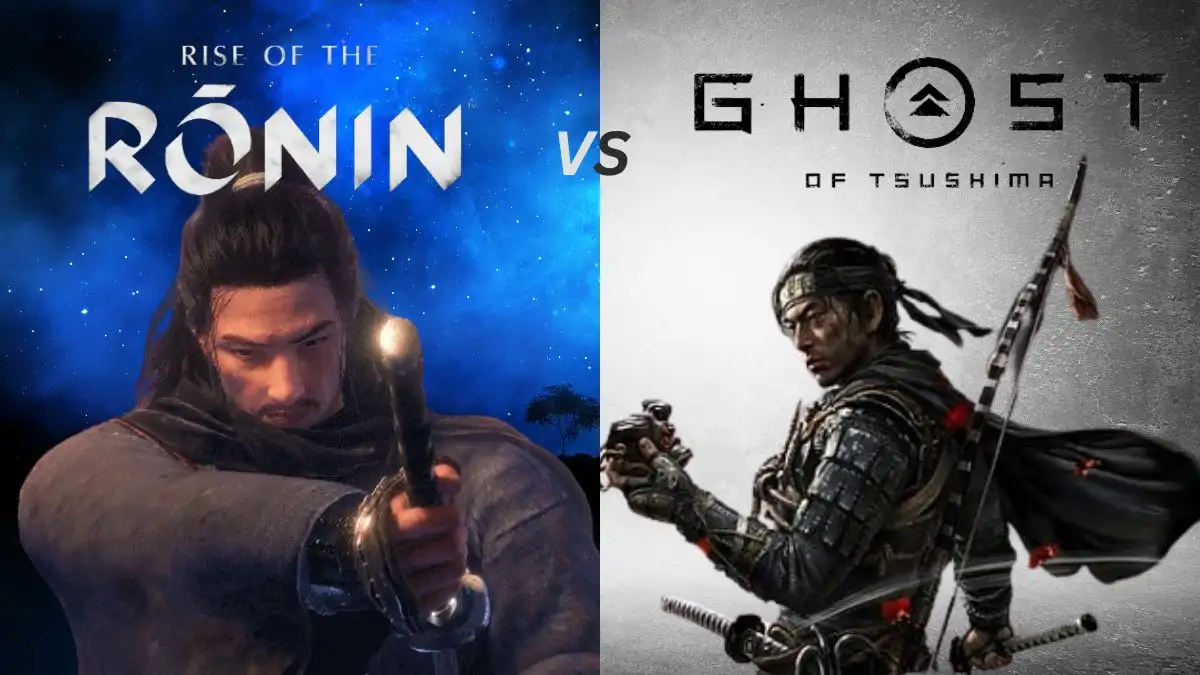Rise of the Ronin and Ghost of Tsushima: Similarities and Differences
by Th
Updated Mar 26, 2024

Rise of the Ronin and Ghost of Tsushima
As the release of the RPG video game, Rise of the Ronin gets closer, many people are comparing it to Ghost of Tsushima. Both are action games set in Japan and let you experience the samurai lifestyle. Rise of the Ronin features lush landscapes, big boss fights, and beautiful scenery.
Even though they have similarities like combat in Japan, they also have differences. Let's explore the similarities and differences between Rise of the Ronin and Ghost of Tsushima.
Similarities
1. Both Games are Based in Japan
Both games are set in Japan but in different periods. Ghost of Tsushima is about the Mongol Invasion of Japan, while Rise of the Ronin is set during the Meiji Restoration period.
2. Both games allow players to take on the role of a samurai
Like the Greek Spartans, Romans, And Scandinavian Vikings, Samurais are famous fighters from Japan. In both Ghost of Tsushima and Rise of the Ronin, you get to be a samurai and fight using katanas, the traditional Japanese swords.
3. Both are open-world video games
Both Ghost of Tsushima and Rise of the Ronin are open-world video games. In Ghost of Tsushima, you can roam around medieval Japanese towns and beautiful natural landscapes on the islands of Tsushima and Iki. On the other hand in Rise of the Ronin, you can explore cities like Edo, Kyoto, and Yokohama, along with the areas surrounding these historic Japanese cities.
Differences
1. Locations and Periods
One major difference between Ghost of Tsushima and Rise of the Ronin is the settings and periods. Ghost of Tsushima is set in the year 1274 on the islands of Tsushima and Iki during the first Mongol Invasion. Whereas Rise of the Ronin is set in a later period of Japanese history. It takes place during the Bakumatsu period when the Tokugawa Shogunate was replaced by the Meiji Dynasty. The games differ in their settings, with Ghost of Tsushima featuring a rural island with forts, estates, and wilderness, while Rise of the Ronin covers cities like Edo, Kyoto, and Yokohama, each with unique urban areas and districts.
2. Weapons
Both Rise of the Ronin and Ghost of Tsushima offer players a range of weapons to defeat enemies. But Rise of the Ronin offers a wider range of weapons due to its setting. Players can use muskets, revolvers, flamethrowers, bows, and shurikens. On the other hand, Ghost of Tsushima features different types of bows and arrows along with Ghost Tools like kunai and bombs for tactical gameplay.
3. Combat
In Ghost of Tsushima, combat is straightforward. Players can use Resolve for various techniques or healing and can challenge enemies to standoffs for quick dispatch. Whereas in Rise of the Ronin, combat is influenced by games like Nioh and Wo Long: Fallen Dynasty. Players can carry multiple weapons and need to break through an enemy's Ki to deal critical hits.
4. Allies
In Ghost of Tsushima, Jin meets important characters who help in the fight against the Mongol invasion throughout the quest chains. Whereas in Rise of the Ronin, you can choose allies to accompany you for passive benefits with the Bond system, or you can also choose to go solo for missions.
5. Endings
There are differences in endings. Ghost of Tsushima has one main ending with some minor differences based on players' choices while Rise of the Ronin offers multiple endings depending on your decisions, which reflect different visions for Japan’s future. It's not clear if there's a "true" or "best" ending.







